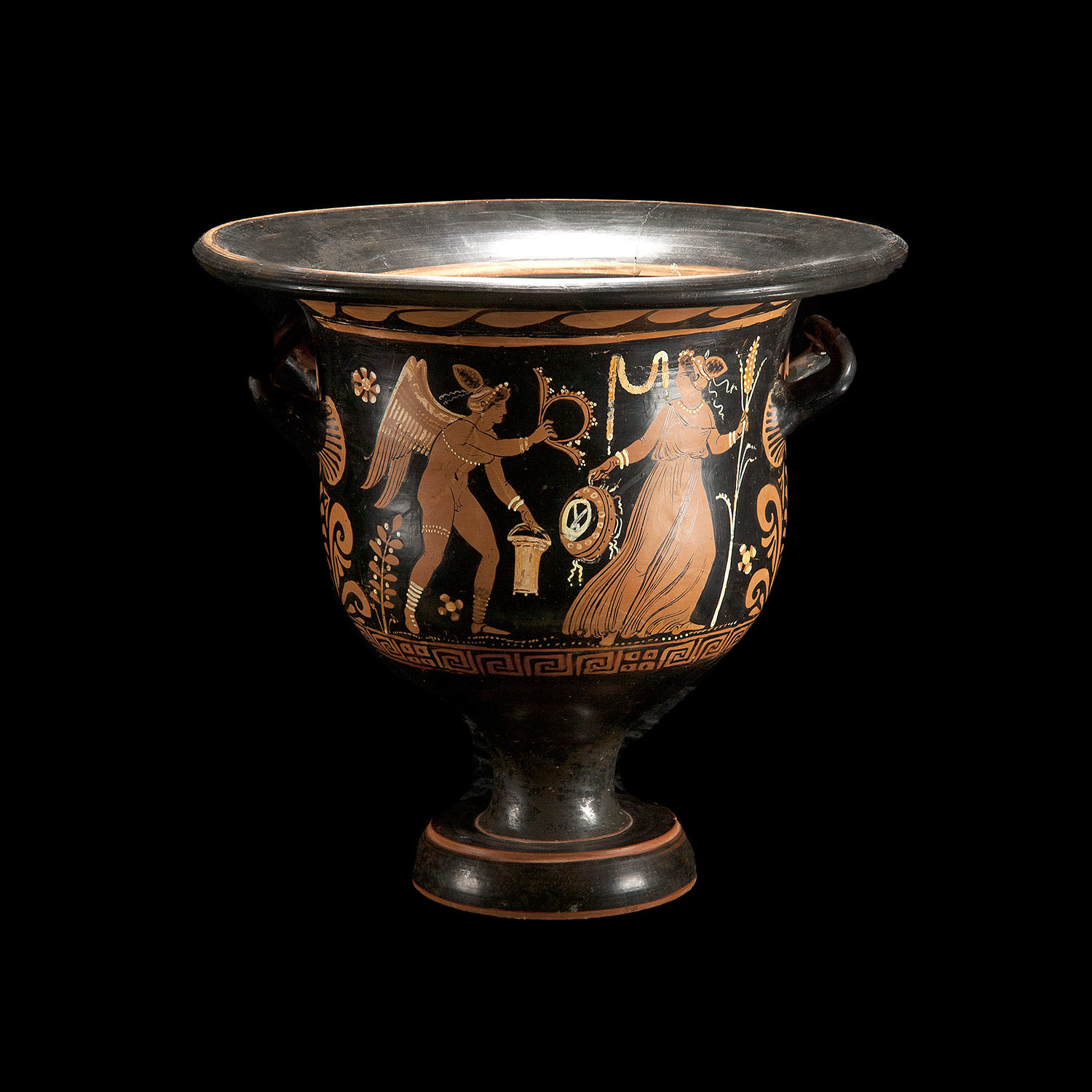Navigation
Install the app
How to install the app on iOS
Follow along with the video below to see how to install our site as a web app on your home screen.
Note: This feature may not be available in some browsers.
More options
Style variation

-

-

-

-

-

Desire to be a vessel of honor unto the Lord Jesus Christ?
Join Hidden in Him and For His Glory for discussions on how
https://christianforums.net/threads/become-a-vessel-of-honor-part-2.112306/
-

-

-

-
Focus on the Family
Strengthening families through biblical principles.
Focus on the Family addresses the use of biblical principles in parenting and marriage to strengthen the family.
Read daily articles from Focus on the Family in the Marriage and Parenting Resources forum.
You are using an out of date browser. It may not display this or other websites correctly.
You should upgrade or use an alternative browser.
You should upgrade or use an alternative browser.
Whole Wheat Communion Bread
- Thread starter precepts
- Start date
Caroline H
Member
- Jul 9, 2008
- 5,830
- 7
I'm not sure I understand your question, maybe it's the way it's worded? Are you asking why churches usually serve those little white crackers or wafers (made from white flour) rather than whole wheat unleavened bread?
Caroline H
Member
- Jul 9, 2008
- 5,830
- 7
Just because flour is white doesn't mean it was bleached. It depends on what part of the wheat grain is used to make the flour as to what colour it has. So matzo (unleavened bread) can be brown or white, and there's no way to tell whether Jesus ate brown or white bread at his last supper.
Mysteryman
Member
- Feb 16, 2010
- 1,988
- 0
Danus said:What difference does it make? We take communion in remembrance of Christ and what he did for us. I don't recall him specifying what type of bread to use, or if we use grape juice or wine. You can use a soda cracker and orange juice if you want.
How about a pretzel and Beer ? :D
precepts
Member
- Apr 4, 2009
- 628
- 0
- Thread starter
- #7
I hear you knocking.............Caroline's quote
I'm not sure I understand your question, maybe it's the way it's worded? Are you asking why churches usually serve those little white crackers or wafers (made from white flour) rather than whole wheat unleavened bread?

Really?Caroline's quote
Just because flour is white doesn't mean it was bleached. It depends on what part of the wheat grain is used to make the flour as to what colour it has. So matzo (unleavened bread) can be brown or white, and there's no way to tell whether Jesus ate brown or white bread at his last supper.

Food for thought! Go figure.Danus' quote
What difference does it make? We take communion in remembrance of Christ and what he did for us. I don't recall him specifying what type of bread to use, or if we use grape juice or wine. You can use a soda cracker and orange juice if you want

Tina
Member
- Jun 28, 2009
- 2,165
- 6
.
Then you will be slain in the spirit ..... drunk for short ! ...... :biglol :nag :crazy
:silly
Mysteryman said:How about a pretzel and Beer ? :D
Then you will be slain in the spirit ..... drunk for short ! ...... :biglol :nag :crazy
:silly
Caroline H
Member
- Jul 9, 2008
- 5,830
- 7
precepts said:Caroline H said:Just because flour is white doesn't mean it was bleached. It depends on what part of the wheat grain is used to make the flour as to what colour it has. So matzo (unleavened bread) can be brown or white, and there's no way to tell whether Jesus ate brown or white bread at his last supper.
Really?
Yeah, check this out:
http://en.wikipedia.org/wiki/Wheat_flourWikipedia said:More wheat flour is produced than any other flour. Wheat varieties are called "clean," "white," or "brown" if they have high gluten content, and they are called "soft" or "weak" flour if gluten content is low. Hard flour, or bread flour, is high in gluten, with 12% to 14% gluten content, and has elastic toughness that holds its shape well once baked. Soft flour is comparatively low in gluten and so results in a finer texture. [1] Soft flour is usually divided into cake flour, which is the lowest in gluten, and pastry flour, which has slightly more gluten than cake flour.
In terms of the parts of the grain (the grass fruit) used in flour—the endosperm or starchy part, the germ or protein part, and the bran or fibre part—there are three general types of flour. White flour is made from the endosperm only. Whole grain or wholemeal flour is made from the entire grain, including bran, endosperm, and germ. A germ flour is made from the endosperm and germ, excluding the bran.
Here's a thought though... Have you ever wondered what Christian Eskimo's do for communion? They don't grow wheat or grapes. If they were to use something other than wheat and wine/grape juice, would they be wrong? I don't think they would, as it is the heart that the Father looks upon.
precepts
Member
- Apr 4, 2009
- 628
- 0
- Thread starter
- #10
That's a nice try but I read an article that said bleaching flour existed in Greek texts. So, I don't believe everything I read, especially when it comes to white supremacy. :biglolCaroline's quote
Yeah, check this out:
Wikipedia wrote:
More wheat flour is produced than any other flour. Wheat varieties are called "clean," "white," or "brown" if they have high gluten content, and they are called "soft" or "weak" flour if gluten content is low. Hard flour, or bread flour, is high in gluten, with 12% to 14% gluten content, and has elastic toughness that holds its shape well once baked. Soft flour is comparatively low in gluten and so results in a finer texture. [1] Soft flour is usually divided into cake flour, which is the lowest in gluten, and pastry flour, which has slightly more gluten than cake flour.
In terms of the parts of the grain (the grass fruit) used in flour—the endosperm or starchy part, the germ or protein part, and the bran or fibre part—there are three general types of flour. White flour is made from the endosperm only. Whole grain or wholemeal flour is made from the entire grain, including bran, endosperm, and germ. A germ flour is made from the endosperm and germ, excluding the bran.
http://en.wikipedia.org/wiki/Wheat_flour
Caroline 6:2Caroline's quote
Here's a thought though... Have you ever wondered what Christian Eskimo's do for communion? They don't grow wheat or grapes. If they were to use something other than wheat and wine/grape juice, would they be wrong? I don't think they would, as it is the heart that the Father looks upon.
 Thanks for explaining your doctrine. :biglol :amen
Thanks for explaining your doctrine. :biglol :amenCaroline H
Member
- Jul 9, 2008
- 5,830
- 7
precepts said:That's a nice try but I read an article that said bleaching flour existed in Greek texts. So, I don't believe everything I read, especially when it comes to white supremacy. :biglolCaroline's quote
Yeah, check this out:
Wikipedia wrote:
More wheat flour is produced than any other flour. Wheat varieties are called "clean," "white," or "brown" if they have high gluten content, and they are called "soft" or "weak" flour if gluten content is low. Hard flour, or bread flour, is high in gluten, with 12% to 14% gluten content, and has elastic toughness that holds its shape well once baked. Soft flour is comparatively low in gluten and so results in a finer texture. [1] Soft flour is usually divided into cake flour, which is the lowest in gluten, and pastry flour, which has slightly more gluten than cake flour.
In terms of the parts of the grain (the grass fruit) used in flour—the endosperm or starchy part, the germ or protein part, and the bran or fibre part—there are three general types of flour. White flour is made from the endosperm only. Whole grain or wholemeal flour is made from the entire grain, including bran, endosperm, and germ. A germ flour is made from the endosperm and germ, excluding the bran.
http://en.wikipedia.org/wiki/Wheat_flour
You're the one who said it was a modern invention

precepts said:Caroline 6:2Caroline H said:Here's a thought though... Have you ever wondered what Christian Eskimo's do for communion? They don't grow wheat or grapes. If they were to use something other than wheat and wine/grape juice, would they be wrong? I don't think they would, as it is the heart that the Father looks upon.Thanks for explaining your doctrine. :biglol :amen
What do you mean by that?
precepts
Member
- Apr 4, 2009
- 628
- 0
- Thread starter
- #12
Caroline's quote

What do you mean by that?[/quote:2fffb2jm] Your opinion is not fact.
It is, but there's definitely a plot or conspiracy to hide the truth and promote Zeus' image as god. If it's not the issue of the white bread, there's the issue of Mary's little lamb, the issue of white hens laying lily white eggs, etc., all contrary to nature. History is based on white supremacy lies from the devil to promote a false image.You're the one who said it was a modern invention

.Caroline 6:2 Thanks for explaining your doctrine. [/quote:2fffb2jm]Caroline's quote
[quote:2fffb2jm]precepts wrote:
[quote:2fffb2jm]Caroline H wrote:
Here's a thought though... Have you ever wondered what Christian Eskimo's do for communion? They don't grow wheat or grapes. If they were to use something other than wheat and wine/grape juice, would they be wrong? I don't think they would, as it is the heart that the Father looks upon
What do you mean by that?[/quote:2fffb2jm] Your opinion is not fact.

Vic C.
Member
- Mar 16, 2003
- 18,230
- 4
I'm not seeing the gist of this thread. It makes no sense to me. This is the practice:
Exo 12:8 And they shall eat the flesh in that night, roast with fire, and unleavened bread; and with bitter herbs they shall eat it.
There is no command other than the bread must not be leavened. Leaven is yeast; yeast is in the fungi family. Bleaching flour does not produce yeast. Here is a brief description of yeast:
Bleaching has nothing to do with the production of yeast, therefore it has no effect on leavening.
Instead of this silly debate over whether or not the flour is bleached, it may behoove you to study why God insisted they use unleavened bread. :yes
Exo 12:8 And they shall eat the flesh in that night, roast with fire, and unleavened bread; and with bitter herbs they shall eat it.
There is no command other than the bread must not be leavened. Leaven is yeast; yeast is in the fungi family. Bleaching flour does not produce yeast. Here is a brief description of yeast:
http://www.prosphora.org/page27.htmlFirst, let’s discuss the nature of leaven. It is another word for yeast, a naturally occurring plant. In ancient times, they didn’t know that. What they did know is that if you took flour and water, kneaded it well and left it in a cool place for a long time, the dough would rise. They also knew that this process would speed up if you saved a little dough each time you baked to add to your next batch. This reserve is now called a ‘starter.’ It was a good way to preserve yeast that made good bread, versus leaving the dough out every night in hope that it would catch a good wild yeast versus a bad one. Once the yeast gets into the lump, it spreads throughout the lump without noticeably changing its color. Yeast is both invisible and yet visible, since it does change the shape and texture of the dough.
Bleaching has nothing to do with the production of yeast, therefore it has no effect on leavening.
(from the book, On Food and Cooking by Harold McGee"After flour has been ground and blended to the desired mix of particles, it is treated chemically to accomplish in a matter of minutes what otherwise takes weeks. Bleaching removes the light yellow color caused by xanthophylls, a variety of carotenoid also found in potatoes and onions. The color has no practical or nutritional significance and is oxidized simply to obtain a uniform whiteness. Bleaching does, however, destroy small amounts of vitamin E in flour, which probably accounts for its bad reputation in some circles. For historical reasons, yellow coloration is valued in pasta, and so semolina is never bleached.
Instead of this silly debate over whether or not the flour is bleached, it may behoove you to study why God insisted they use unleavened bread. :yes
precepts
Member
- Apr 4, 2009
- 628
- 0
- Thread starter
- #14
Can you say Pontificate?  totopic Why is it that when certain individuals don't agree with someone else's opinion, they try to force their opinion on others as if their opinion is fact? :nag I thougth this was a free country where everyone's entitled to their own opinion. Need I define "opinion"?
totopic Why is it that when certain individuals don't agree with someone else's opinion, they try to force their opinion on others as if their opinion is fact? :nag I thougth this was a free country where everyone's entitled to their own opinion. Need I define "opinion"? 
 totopic Why is it that when certain individuals don't agree with someone else's opinion, they try to force their opinion on others as if their opinion is fact? :nag I thougth this was a free country where everyone's entitled to their own opinion. Need I define "opinion"?
totopic Why is it that when certain individuals don't agree with someone else's opinion, they try to force their opinion on others as if their opinion is fact? :nag I thougth this was a free country where everyone's entitled to their own opinion. Need I define "opinion"? 
Caroline H
Member
- Jul 9, 2008
- 5,830
- 7
Vic C.
Member
- Mar 16, 2003
- 18,230
- 4
Define this! [attachment=0:2tm4ig5u]reply-locked.gif[/attachment:2tm4ig5u]precepts said:Can you say Pontificate?totopic Why is it that when certain individuals don't agree with someone else's opinion, they try to force their opinion on others as if their opinion is fact? :nag I thougth this was a free country where everyone's entitled to their own opinion. Need I define "opinion"?

